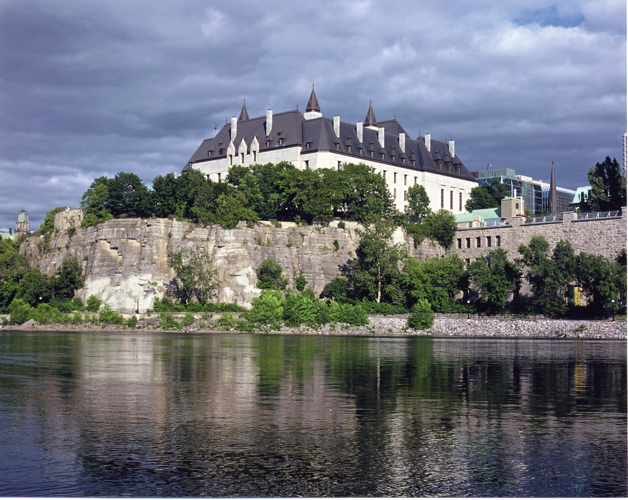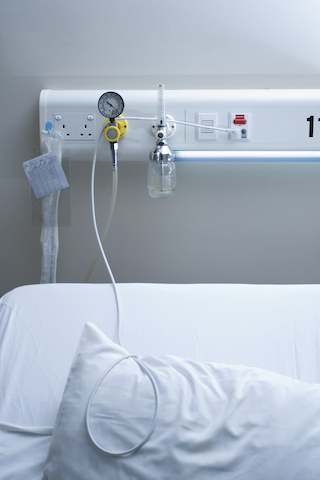
On June 6, the Supreme Court of Canada’s decision making physician-hastened death legal will come into effect.
Op-Ed: The dying are too ill to speak, and the dead will never complain. We must speak for them.
The following is an op-ed written by Harvey Max Chochinov, a professor of psychiatry and Canada Research Chair in Palliative Care. It was originally published in the Winnipeg Free Press on March 11, 2016. He will write another piece for the paper on a similar topic for next week.

‘More people die at HSC than any other health-care facility in the province. Yet, HSC does not have a single, dedicated palliative care bed…And yet, should the report’s recommendation come to fruition, HSC would be required to offer euthanasia and assisted suicide.’
On June 6, the Supreme Court of Canada’s decision making physician-hastened death legal will come into effect. A parliamentary committee asked to help the government plot how that would roll out in Canada has made some far-reaching recommendations, well beyond what was contemplated by the court in Carter v. Canada.
The committee, for example, said physician-assisted dying ought to be available in all publicly-funded hospitals and health facilities, including palliative care centres. But some health facilities are ill-equipped, and others are inappropriate settings for medically assisted deaths.
In Manitoba, even some of the best health facilities are simply not up to the job: Health Sciences Centre, for example, does many things well but delivering a “good” death is not its strong suit.
HSC is an extraordinary facility. It is the largest health-care centre in the province, with nearly 8,000 staff and volunteers serving Manitoba, northwestern Ontario and Nunavut. It is the province’s designated trauma centre as well as the centre for transplant, burns, neurosciences and pediatric care.
More people die at HSC than any other health-care facility in the province. Yet, HSC does not have a single, dedicated palliative care bed.
There is no palliative care ward to offer the privacy and calm those dying patients and their families need and deserve. While a palliative care physician and nurse are on-site to give their advice upon request, there is no palliative care service working to address all forms of suffering — physical, psychological and existential — affecting patients and their families. And yet, should the report’s recommendation come to fruition, HSC would be required to offer euthanasia and assisted suicide.
The Children’s Hospital is also located on the HSC campus. It hosts an emergency room for children, pediatric and neonatal intensive care units; in-patient units for surgery, pediatric oncology, burns and plastic surgery, along with numerous outpatient clinics.
Palliative care consultation is available upon request. But if a child is dying at the Children’s Hospital, there is no option to enter a specialized children’s palliative care ward or a children’s hospice. This disproportionately affects First Nations and Inuit children, particularly those from rural and remote parts of the province, given the challenges of discharging them home.
These considerations did not stay the hand of the parliamentary committee, which recommended that within the next three years — despite a nationwide scarcity of pediatric palliative care — that eligibility for medical assistance in dying be extended to those younger than 18.
What about the notion of forcing euthanasia and physician-assisted suicide into faith-based health-care organizations?
Founded by the Sisters of Charity (Grey Nuns) in 1871, St. Boniface Hospital provides care for 4,000 in-patients and about 40,000 outpatients annually, employs nearly 700 doctors, 1,500 nurses and hosts cutting-edge, world-class research. It’s all built on the foundation of inviolable moral, religious and ethical traditions.
Failure to find a more nuanced solution that respects conscientious objection and safeguards patient autonomy will place faith-based facilities on a direct collision course with the federal government.
St. Boniface Hospital also houses one of Winnipeg’s premier palliative care units. People, however, are afraid of palliative care; many refuse early referral, which results in protracted and avoidable pain and suffering. Some even suspect that pain medication might inadvertently hasten their death (it will not).
Requiring palliative care services to include medical assistance in dying would do little to assuage those fears. The World Health Organization, in fact, insists on the separation between palliative care and death-hastening practices.
These are just some examples of concerns that would arise if all publicly funded facilities have to offer physician-assisted deaths. The same observations could be made at many health centres, including personal care homes, in the province.
Some people have called the recommendations of the parliamentary committee bold. I fear they lack the wisdom the Supreme Court called for when it described “a complex regulatory regime” needed to balance physician-hastened death with protecting vulnerable persons from being induced to commit suicide at a time of weakness.
With the advent of physician-hastened death, there has never been a more pressing moment in history demanding we get our approach to human suffering and palliative care right. Fewer than two per cent of patients will likely choose to have their lives ended; most will want to live out the length of their days in care and comfort. That should not be asking too much.
One thing is for certain: the dying are too ill to speak, and the dead will never complain. We, the living, must give voice to their needs, remembering our turn will come soon enough.






